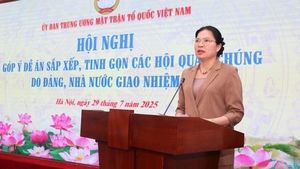Foreign investors are pulling out of China’s economy at alarming rates, reflecting deepening concerns about the investment climate and the country’s economic stagnation. Recent data paints a concerning picture: China’s direct investment liabilities dropped by $8.1 billion during the third quarter of 2024 alone, according to the State Administration of Foreign Exchange (SAFE). Overall, foreign direct investment (FDI) fell by nearly $13 billion within the first nine months of the year, raising flags about the viability of China’s market as a safe haven for investors.
This decline marks the potential start of what could be the first annual net outflow of foreign investment since data recording began in 1990. Various factors contribute to this turnaround, including geopolitical tensions, economic pessimism, and increasing competition from local companies. The evidence is stark: major players such as Nissan Motor Corporation and Volkswagen AG have scaled back their operations, indicating significant shifts within the automotive sector. Other big names, like Konica Minolta Inc. and International Business Machines Corporation (IBM), have also retrenched their activities, the latter closing down its hardware research team, impacting about 1,000 employees.
This trend of divestment coincides with China’s efforts to reinvigorate its economy amid slowing growth rates. Recently, the government approved plans to inject 6 trillion yuan ($839 billion) to help local governments manage their debts. Local financing has seen substantial strain due to excessive borrowing, particularly following high spending during the COVID-19 pandemic and decreased land sales, which are a major revenue source for local administrations.
Finance Minister Lan Fo’an has estimated the hidden local government debt could reach 14.3 trillion yuan ($2 trillion) by the end of 2023. He detailed plans for the government to provide two trillion yuan annually from 2024 to 2026 to target this concealed debt. The aim is to cut down the total hidden debt to 2.3 trillion yuan ($320.9 billion) by 2028.
Despite these efforts, many foreign investors remain unconvinced about the prospects of the Chinese economy. Between rising U.S.-China tensions and the threat of punitive tariffs from both sides, large companies are making calculated exit strategies. For example, Nippon Steel Corporation announced its intent to exit its joint venture operations within China.
Interestingly, there’s been a noticeable shift as outbound Chinese investments have surged. Data suggests China's overseas assets increased by about $34 billion just within the last quarter, leading to total outflows of $143 billion this year. This trend highlights how Chinese firms are seeking opportunities abroad to offset local market challenges and secure raw materials.
This is a stark pivot: as foreign firms withdraw, Chinese investments abroad are on the rise. Major companies like BYD Auto Co., Ltd., have escalated their global operations, setting ambitions to secure resources and expand their production capacities overseas. This is likely to become more prevalent, especially as global tariffs on Chinese exports increase.
To make matters worse for foreign investors, the recent market performance following September’s stimulus plan appeared to offer some hope, at least temporarily. Foreign stocks jumped more than 26% from August with the Chinese benchmark index gaining nearly 21% initially. Yet, as quickly as gains were made, many of them have evaporated as confidence continues to wane.
The crux of the problem appears rooted in diminishing local consumption and external pressures from other markets. Analysts have warned of the urgent need for bold actions to revitalize the economy, evidenced by the spiraling debt situation faced by local governments amid vanishing investor confidence.
This decline of foreign investment and simultaneous increase of outbound investments suggests more than just a temporary market fluctuation; it poses fundamental questions about the future economic strategies of China. Investors around the world will have their eyes tuned to China’s moves over the next few quarters, as both domestic and international companies redefine their relationship with the world's second-largest economy.
Despite efforts to stabilize the situation, the combination of internal debt issues and external market pressures is forcing many to reconsider their position within China's borders. The coming months will likely be telling as to whether this is merely a phase or the onset of long-lasting changes within the global economic architecture.



